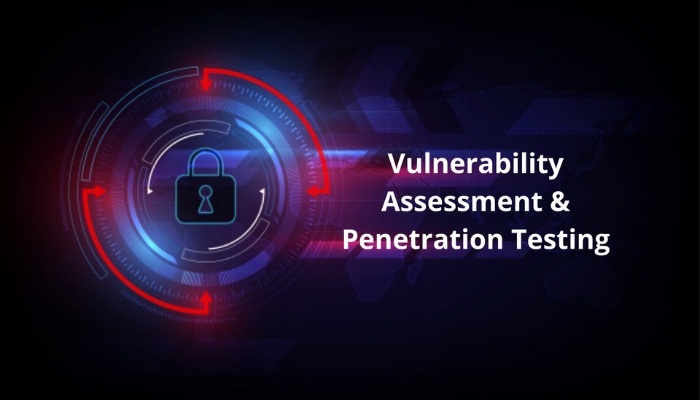What Are Vulnerability Assessment and Penetration Testing (VAPT)
What Are Vulnerability Assessment and Penetration Testing (VAPT)
Vulnerability assessment and penetration testing (VAPT) is the process of identifying, analysing, and evaluating the security weaknesses (vulnerabilities) of a computer system, network, or web application. The goal of VAPT is to determine the effectiveness of the existing security controls and to identify any vulnerabilities that could be exploited by an attacker.

- VAPT can be divided into two main categories: Network VAPT and Web application VAPT. Network VAPT focuses on the security of a network and its infrastructure, while Web application VAPT focuses on the security of web applications and their underlying infrastructure.
- VAPT can be divided into two types: Black Box testing and White Box testing. Black Box testing simulates an attacker's perspective, where the tester has no prior knowledge of the system and attempts to identify vulnerabilities using publicly available information. White Box testing simulates an internal perspective, where the tester has complete knowledge of the system and attempts to identify vulnerabilities using this knowledge.
- VAPT is a complex process that requires a combination of technical knowledge and expertise in areas such as network security, web application security, and exploitation techniques.
- VAPT should be conducted in a controlled and authorized manner to ensure that any vulnerabilities identified during the assessment are not exploited by unauthorized parties.
- VAPT should be performed in compliance with industry standards such as OWASP, PCI DSS, and NIST, to ensure that the assessment is comprehensive and effective.
The VAPT process typically includes the following steps:
- Reconnaissance: Gathering information about the target system, network, or web application.
- Vulnerability scanning: Automated tools are used to identify known vulnerabilities in the target system.
- Vulnerability analysis: Manually verifying and analysing the vulnerabilities identified in the previous step.
- Exploitation: Attempting to exploit the vulnerabilities to determine the potential impact of a successful attack.
- Reporting: Documenting the findings and recommendations for remediation.
There are a few other important factors for organizations to consider on how VAPT has to be conducted regularly.
- VAPT should be conducted regularly: Vulnerabilities can be introduced at any time, so it is important to conduct VAPT on a regular basis to ensure that any new vulnerabilities are identified and addressed in a timely manner.
- VAPT should be conducted from both internal and external perspectives: Vulnerabilities can originate from both internal and external sources, so it is important to conduct VAPT from both internal and external perspectives to identify all potential vulnerabilities.
- VAPT should be integrated into the overall security strategy: VAPT should be integrated into the overall security strategy of an organization to ensure that all vulnerabilities are identified and addressed in a comprehensive and effective manner.
- VAPT should be performed by certified professionals, who have the knowledge, skills and experience to carry out the assessment and penetration testing as per industry standards and best practices.
- VAPT should always be followed by remediation and mitigation of vulnerabilities found during the assessment.
It is important to note that VAPT is a critical component of an organization's overall security strategy and should be conducted by qualified professionals or vulnerability assessment company with the necessary knowledge, skills, and experience to identify and mitigate vulnerabilities in a comprehensive and effective manner.
For more information on vulnerability assessment services and VAPT testing in Pune connect with ANA Cyber Forensic Pvt Ltd. Call us at +91 - 9011041569
Contact
For more information on how we can help you secure your data, get you compliant and protect your business, please complete the form below and one of Information security / Cyber Forensic expert and Compliance specialists will respond to you as soon as possible.


